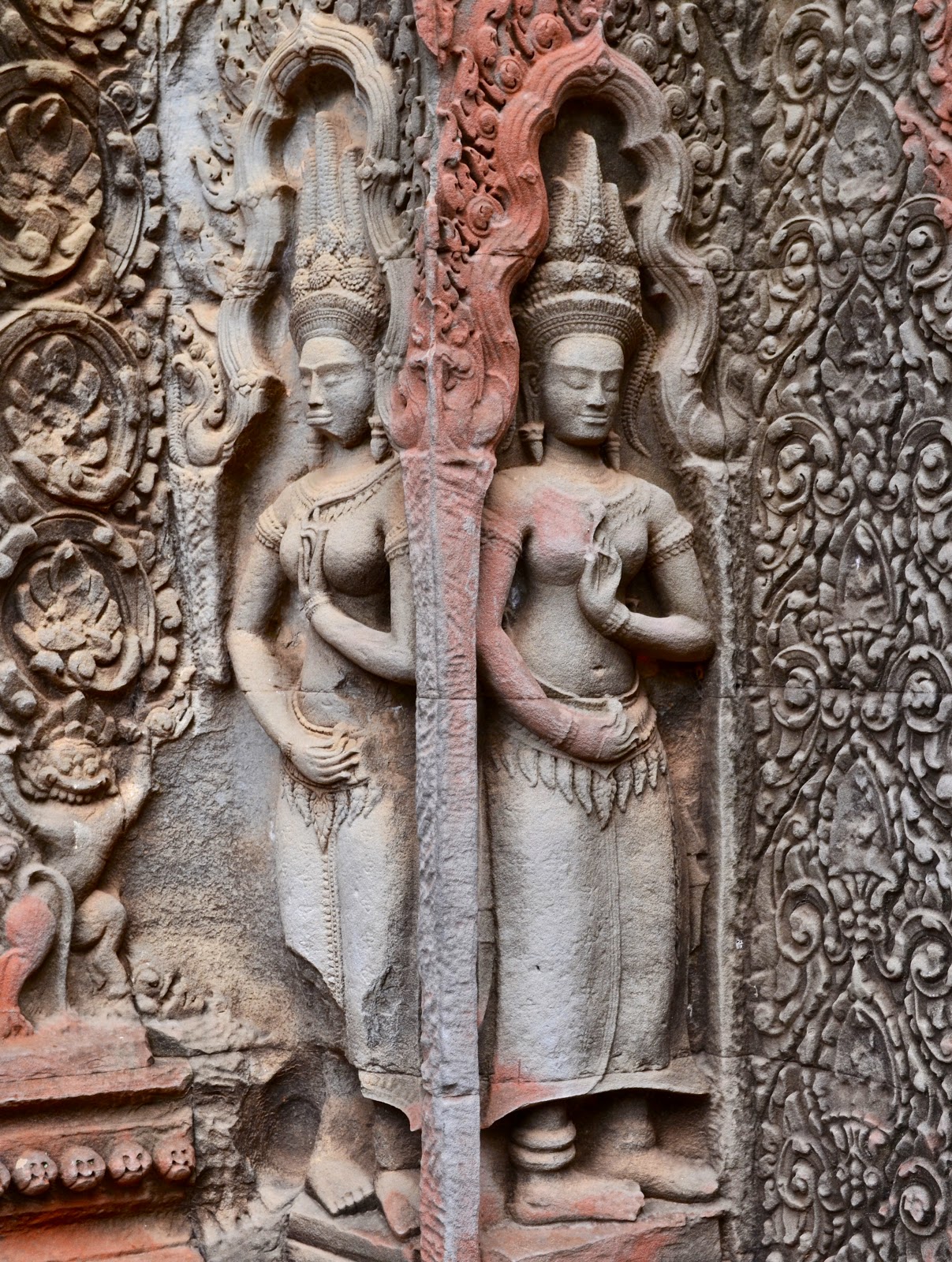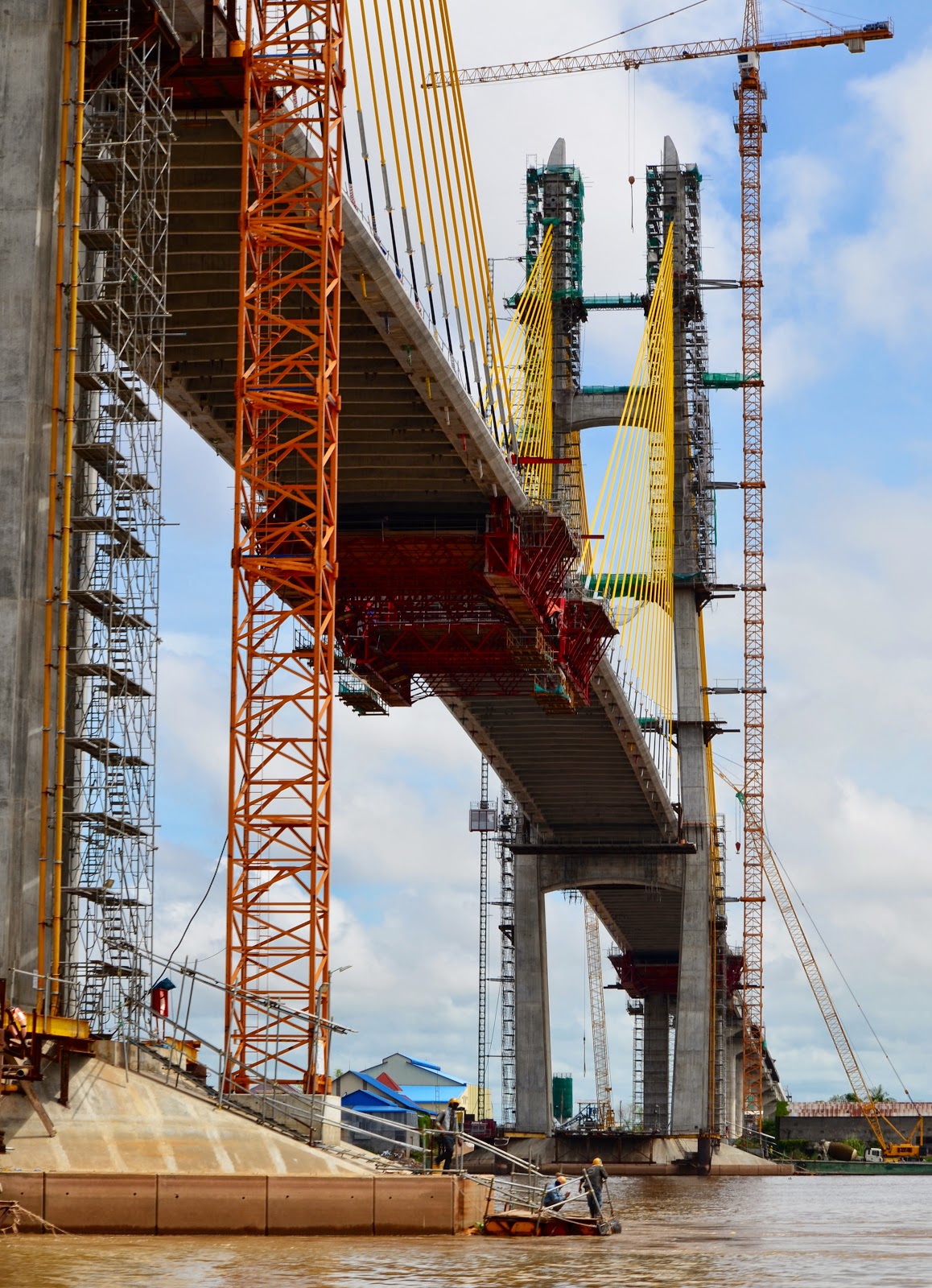- Travel Vietnam is a world class travel agency. We'd recommend them to anyone planning a trip to Southeast Asia. Every aspect of the trip, (except the visa SNAFU our own mistake caused) went off without a hitch. The guides were friendly and knowlegeable and spoke decent or better English, the drivers were skillful and patient in horrendous traffic, the hotels were wonderful and the restaurants they chose were uniformly great.
- A good guide is worth the modest cost of his/her service. We never would have seen as much or understood what we were seeing as well had it not been for our wonderful guides. Tran, our Saigon and Delta guide was a true force of nature and was more determined than I was that I should see the location of the training center where I was stationed when I first arrived in Vietnam. Had it not been for her persistence, we would have missed out on a wonderful visit with the "clam police" in Ba Tri.
- Having a driver pick you up at the station, get you to your hotel, take you to your tour start point in the morning, wait while you take photos and negotiate the horrendous city traffic, while you sit in the back seat, is a great way to travel.
- Traveling by train in Vietnam is NOT like riding on the Orient Express. It may beat riding in the back of a truck with the livestock, but not by much.
- We liked the countryside and the small cities on this trip a great deal better than the big cities (Hanoi, HCM City and Phnom Penh). The pace is not nearly so frenetic and the people seem genuinely pleased to see visitors. Folks in the big cities (apart from some of the market shopkeepers and tuk-tuk drivers) are polite, but in a big-city, preoccupied sort of way. By contrast, the Vietnamese and Cambodian people in the smaller communities are invariably friendly, curious and welcoming.
- The Vietnamese and Cambodian children are beautiful, seem happy and are eager to practice their elementary school English. Kathy and I agree that the Vietnamese women are among the most beautiful in the world. Kathy thinks the Vietnamese men look too young. I don't know whether to be flattered or offended.
- The food, especially in Vietnam, is fabulous, healthy and cheap. We'd all be skinny if we ate their diet of lots of vegetables, a liitle meat and very little fat.
Reflections
When I left the U.S. for Vietnam in October, 1972, I was convinced that it was long past time for the U.S. to be out of that war. Nothing I saw in my year there led me to conclude I was wrong. The South's collapse in 1975 was saddening but not surprising to me, and, In my judgment, no amount of additional bombing or arms aid to Saigon would have changed the eventual outcome.
Coming back after 40+ years only reinforced my belief that our long involvement in Vietnam was a tragedy - for us, but more so for the Vietnamese. Almost 60,000 Americans lost their lives, but a million or more Vietnamese died, many more were maimed, the whole country was impoverished, and only now does it seem that the full potential of an industrious, intelligent people is being realized.
Vietnam today seems very much like the place American politicians said we were trying to help build back then. The government is communist and only one party is permitted, but the people seem to be thriving in a market economy, where state-owned enterprises are competing with private businesses. The standard of sanitation is infinitely better now, everybody seems to have a motor bike, at least in the cities, and every square inch of land appears to be devoted to intensive agriculture, including areas that were thoroughly defoliated and churned up by bombing when I was there, Religious practice among Buddhists, Catholics and Cao Dais appears to be thriving, with new churches, temples and pagodas everywhere. Despite the government's control of the media, at least some of the people who have the most frequent contact with foreigners are candid and critical of their government's shortcomings, especially its cronyism and corruption.
I don't intend to minimize the suffering endured by our allies and their families, many of whom spent years in "reeducation camps" or worse. Everybody in Vietnam seems to have a grim story to tell about their family's experiences during the war. One of our guides' father went missing in action in Quang Tri province in 1968. Her mother never recovered from her grief. Another's father was reported by his comrades to have been killed on the Ho Chi Minh Trail, but returned home unannounced and ill with malaria shortly after his family had been told of his death. Still another's grandmother escaped to the US and persuaded her daughter to try to join her. After three unsuccessful tries, daughter and granddaughter decided that fate intended them to stay in Vietnam. The granddaughter even spent a day in jail once while on holiday, when the police assumed she and her aunt were trying to escape because they had packages of food and clothing with them for their holiday trip. Mr. Tranh, the ebullient historian, antique collector and government consultant we met, spent three years in a camp being "rehabilitated."
Nevertheless, it is difficult not to think that if we knew in 1956-1963 what we now know the eventual outcome for Vietnam would be - a country friendly to the U.S., wary of China, at peace with her neighbors, and relentlessly focussed on developing her economy, we would have welcomed the prospect, avoided the suffering, loss of life and devastation caused by the war and advanced the date when Vietnam would achieve its present state by 25 or 30 years.
Likewise in Cambodia. I don't know a great deal about the Cambodian civil war, but it certainly seems that the U.S. helped bring it on by undercutting a popular, but "neutralist" king who would not join our fight against the VC and North Vietnamese, and aiding his usurper who was willing to fight the Vietnamese. North Vietnam's concurrent support for the Khmer Rouge to help protect its Cambodian bases and supply lines helped build the maniacal regime that took power in Cambodia in 1975. It is not difficult to believe that the spread of the war into Cambodia helped to create a powerful Khmer Rouge army and that if the war had not metastasized, Cambodia might have been spared the catastrophe that accompanied the Khmer Rouge's 1975 takeover. Anyway, I have no doubt now that our involvement in that war too was a mistake.
I wasn't too happy to come to Vietnam the first time, but I am beyond glad to have come back to Southeast Asia on this trip. I'm also very happy to be heading home.
Goodbye.










































































